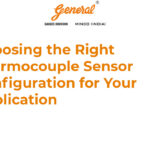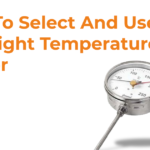Transmitters are a vital component of the industrial process. From monitoring, and controlling, to setting standards in your desired industrial processes. The applicability of transmitters was unmatched from the earliest days of industrialization, even before the Industrial Revolution.
Transmitters are critical in many industries, including oil and gas, chemical manufacturers, power generation, healthcare, and telecommunications, since they allow for exact data and signal monitoring and transmission. These devices assure the safety, quality control, and efficiency of processes ranging from environmental monitoring and aerospace to automotive production and defence applications, making them vital in a wide range of industries throughout the world.
As the industries grew with new technology and the world’s demands grew, the new industries demanded new generational transmitters. This need was met with contact, non-contact, wireless, analogous, digital, and a variety of other novel transmitter types.
Types of the transmitters based on their nature of application:
- Contact Transmitters
- Non-Contact Transmitters
- Invasive Transmitters
- Non-Invasive Transmitters
- Wireless Transmitters
- Analog Transmitters
- Digital Transmitters
- Smart Transmitters
- Single-Variable Transmitters
- Multivariable Transmitters
- Disposable Transmitters
- Fixed Transmitters
- Portable Transmitter
Radar level transmitters (Radar Transmitters) under the non-contact types of transmitters have shown to be notably beneficial, enabling increased efficiency and adaptability in a variety of industries. They have shown to be important in industries including aviation, marine, weather monitoring, and industrial level measuring. Radar transmitters excel in providing precise and dependable measurements without making direct contact with the items or surfaces they monitor, making them important in scenarios requiring accuracy and robustness under adverse environments.
In this article, we will look at the positive aspects of radar transmitters and why they are the Best Option for Level Measurement.
Why was there a need for Radar Transmitters?
Traditional level transmitters, such as float switches or sight glasses, had a number of limitations. They struggled with precision, frequently failing to manage procedures correctly. Also, these contact-based transmitter approaches introduced issues such as wear and tear, maintenance headaches, and contamination risks.
Environmental variables such as dust, vapour, severe temperatures, and caustic compounds limited their performance even more. In addition, their limited measuring ranges rendered them impractical for big tanks or vessels, and the lack of real-time data forced companies to respond to fluctuating levels and possible hazards with delays.
These issues with the other transmitters included:
- Limited Accuracy
- Contact-Based Methods
- Environmental Constraints
- Limited Range
- Lack of Real-Time Data
Before the introduction of radar transmitters, industries faced a number of issues in terms of level measuring and monitoring. Despite the availability of more sophisticated and efficient transmitters, the industry’s need for more sophisticated products and supplies increased at an alarming rate.
This rate needed not only quality but also quantity and the best price. To achieve this, industries must lower the production process time, but there is a limit to cut down the production time. As a result, the industries began to reduce the time utilised for quality control and measurement procedures. The industry needed more sophisticated and complex transmitters at this point.
Also read: Explore The Advantage of Radar Level Transmitters
Benefits Radar Transmitters Bring to The Industries:
- High Accuracy
- Cost-Effective
- Real-Time Data
- Improved Safety
- Reduced Downtime
- Remote Monitoring & Control
- Versatility Across Industries
- Non-Contact Measurement
- Environmental Resilience
- Extended Measurement Range
Radar-level transmitters are found to be extremely beneficial in industrial settings. By removing the requirement for direct physical contact with the chemical being monitored, they enable accurate and reliable non-contact measurements, lowering the risk of maintenance and contamination.
These transmitters can function well in difficult environments like dusty, vaporous, and corrosive surroundings because they are environmentally durable. Radar technology also allows for longer measurement ranges, making it appropriate for huge tanks and vessels.
This helps manufacturers and industries choose from a variety of operations without affecting the current industrial environment settings. Their real-time data enables quick responses to changes in level, optimising industrial processes in a variety of industries, including mining, petrochemicals, and wastewater treatment.
Also Read: What Are Multipoint Designs And Their Common Applications?
Improved safety is facilitated by increased precision and constant monitoring, and downtime is minimised by their long lifespan, low maintenance requirements, and low cost. Radar level transmitters also enable remote monitoring and control, facilitating efficient resource management and reducing the need for on-site personnel.
Conclusion
The many capabilities of radar transmitters collectively assisted manufacturers and industries in reducing total manufacturing time and costs, meeting worldwide demand without compromising quality or cost. These radar transmitters, which have an exceptional measurement range and real-time data collection capability, enable a wide range of industries, from mining to petrochemicals, to more effectively optimise their operations and raise safety.
Owing to the non-contact behaviour of the radar transmitters, their durability increased and their maintenance requirements decreased. The same quality also contributed to their long-term cost-effectiveness. As a result, it didn’t take long for radar transmitters to become industry favourites. These devices are the pinnacle of efficiency and resource management in contemporary industrial settings because they minimise downtime and enable remote monitoring and control.
General Instruments Consortium as a leading radar level transmitter manufacturer, understands the unique needs of various industries and offer a wide range of radar level transmitters to meet those needs. Our radar level transmitters are known for their high accuracy, reliability, and durability, even in the most challenging environments. We are committed to providing our customers with the best possible solutions and services, and we are confident that our radar level transmitters can help them improve their efficiency, safety, and profitability.

